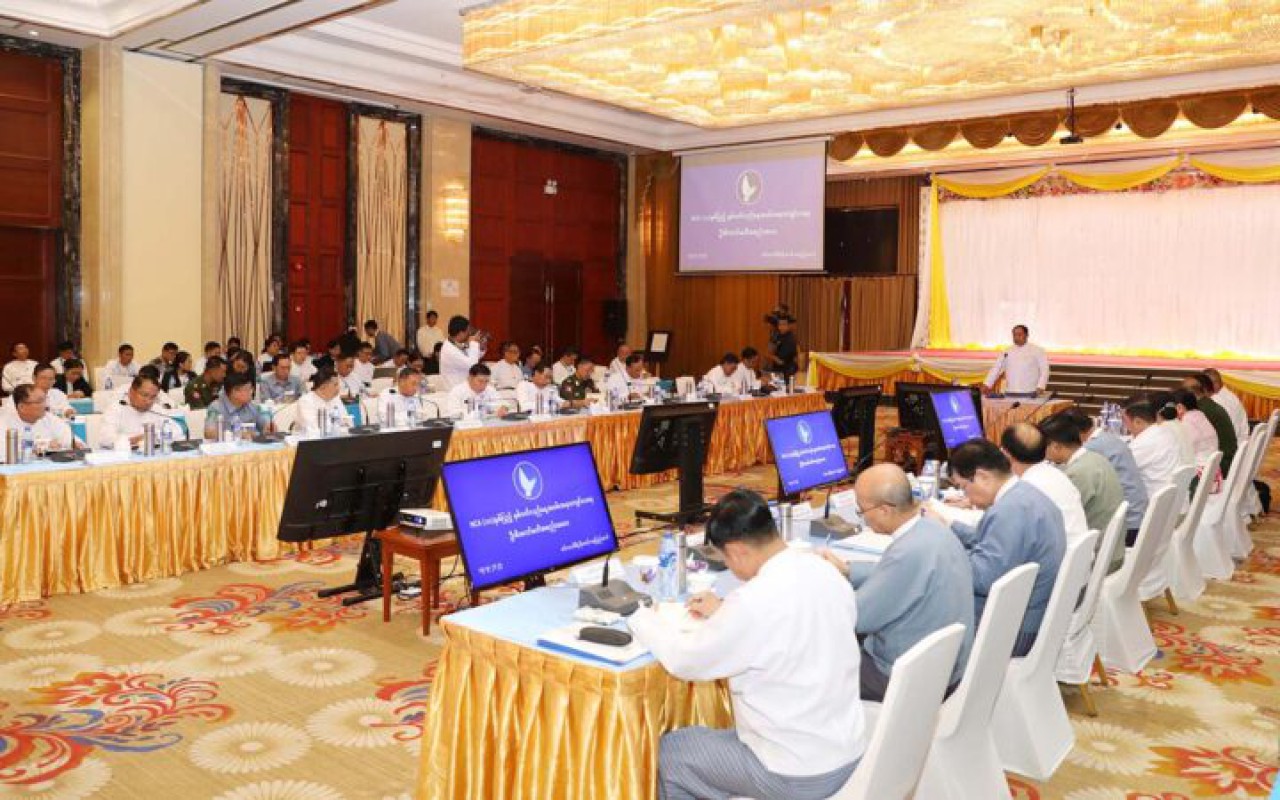A decade of the NCA: expecting deeper achievements in peace and reconciliation

643

Phyo Lin Aung (NP News) - Oct 13
On 15 October 2015, the Myanmar government, the Tatmadaw, the Pyidaungsu Hluttaw (Union Parliament), and ten ethnic armed organizations (EAOs) signed the Nationwide Ceasefire Agreement (NCA) in the presence of both domestic and international witnesses, including the United Nations and the European Union. The accord was heralded as a milestone in Myanmar’s peace process, aiming to end decades of conflict and lay the groundwork for a democratic federal union.
The NCA is still the main deciding factor in Myanmar’s political scene as the tenth anniversary will be celebrated in October 2025. Those who back the agreement consider it a historic framework that is still instrumental in the planning of the dialogue, whereas detractors say that the fighting that continues to go on is evidence of the accord being broken.
There are many EAOs operating in Myanmar; however, only ten members of the NCA initially signed it. Those groups were the All Burma Students’ Democratic Front (ABSDF), Arakan Liberation Party (ALP), Chin National Front (CNF), Democratic Karen Benevolent Army (DKBA), Karen National Union (KNU), Karen National Union/Karen National Liberation Army Peace Council, Lahu Democratic Union (LDU), New Mon State Party (NMSP), Pa-O National Liberation Organization (PNLO), and the Restoration Council of Shan State (RCSS).
However, overtime, these groups gradually withdrew their support for the process and notably, since 2021, the KNU, CNF, PNLO, and ABSDF have not only disengaged but have also gone to the extreme of opposing the government by resorting to arms. This shift has fueled claims that the NCA is no longer relevant.
At present, it is only the so-called “7 EAOs Alliance” that can be said to be absolutely committed to the deal although even among this grouping, there are still some diverse stances. According to a report from February 2024, the NMSP launched attacks against government positions, raising questions about long-term commitment.
Even so, the NCA might not be considered invalid by those who have left it. The agreement, in fact, resulted from negotiations that lasted over 1,450 days and more than 5,000 meetings prior to its signing. Since it was approved by both local and international observers, the government maintains that it has a lasting legality.
Authorities also point out that while clashes persist, these stem from groups choosing armed confrontation over political negotiation. Therefore, claims that the NCA has collapsed are merely attempts to derail the peace process and destabilize the country.
The Karen National Union (KNU) has been among the main groups advancing the narrative that the NCA is collapsing. After the political turmoil in Myanmar in February 2021, the KNU declared that it would be withdrawing from the NCA framework. Even before then, in November 2018, the organization had declared a temporary suspension of its participation in formal peace talks, citing dissatisfaction with implementation.
That decision significantly slowed progress. The political dialogues that had been planned, the union peace conferences, as well as working zmeetings, were no longer able to proceed in line with the agreed roadmap. In fact, by late 2018, a sort of deadlock had set in the peace process.
The final Union Peace Conference under the NLD government took place in August 2020. Analysts note that even during the relatively stable final years of Myanmar’s democratic administration, the KNU’s reluctance to engage weakened momentum and prevented breakthroughs.
Following the declaration of a state of emergency in February 2021, the State Administration Council (SAC) pledged not to abandon the peace process. In that year, it formed three special peace-making bodies in February. The National Solidarity and Peace-making Central Committee (NSPCC), a working committee (NSPWC), and a negotiation committee (NSPNC) were the three groups given the task of holding talks with EAOs and maintaining a dialogue with them.
It gives the information of the NSPNC that between February 2021 and September 2025, it had achieved 156 rounds of talks, including:
93 with NCA signatory EAOs; 26 meets with non-signatory EAOs; 22 with political parties; and 13 with peace mediators and civil society groups.
Additionally, registered political parties agreed on 43 proposed amendments to the 2008 Constitution between 2022 and early 2025, highlighting continued political engagement alongside armed conflict.
On 15 October 2025, the NCA will hold official ceremonies to commemorate its upcoming tenth anniversary, followed by a three-day workshop. The NSPNC is organizing the workshop and is anticipating the participation of the international experts from eight countries, besides the domestic scholars and political stakeholders.
The issues to be discussed are: Lessons learned from ten years of ceasefire implementation; Strategies for reintegrating EAOs into the peace process; Enhancing human resource development for peacebuilding; Economic opportunities linked to national reconciliation and Short- and long-term strategies to overcome challenges in the peace process.
The findings and recommendations from the dialogue are expected to guide the next government after the elections, with officials expressing hope that this will help maintain continuity in the peace agenda.
The NCA represents both hope and lament ten years after its agreement. For those backing it, the NCA is still the most legitimate peace constitution in Myanmar, a step that stabilizes the idea of talks and a federal democratic system. Those opposing it, however, consider the continuous clashes and the defections of the signatories as evidence that the NCA has become an empty shell.
Despite criticisms and ongoing armed clashes, the NCA remains a cornerstone of Myanmar’s peace process. It stands as a legally binding, internationally recognized framework for political dialogue and national reconciliation. The 10th anniversary commemoration serves as both a reflection on the challenges of the past decade and an opportunity to chart a more inclusive, sustainable path toward peace in Myanmar.